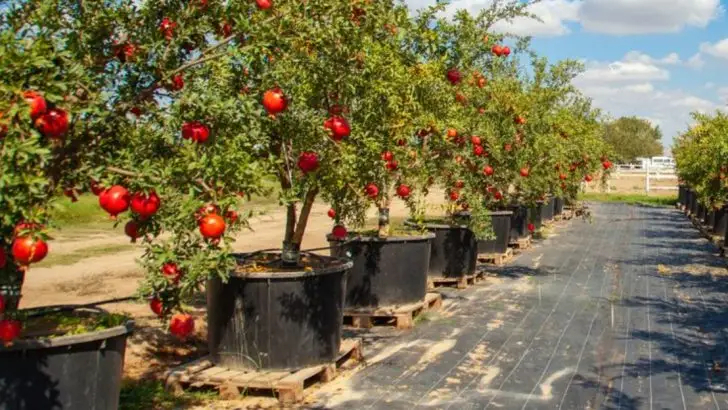Growing a pomegranate tree in a container is easier than you might think, and it’s a great way to enjoy fresh, homegrown fruit even if you have limited space. These hardy trees thrive in warm climates, but with the right care, they can flourish on patios, balconies, or even indoors in colder regions.
The key to success lies in choosing the right pot, using well-draining soil, and providing plenty of sunlight. Regular pruning keeps the tree compact and productive, while proper watering and fertilization ensure healthy growth and abundant fruit production.
With a little attention to winter protection and pollination, your pomegranate tree can reward you with delicious, antioxidant-rich fruit year after year—no backyard needed!
Choose the Right Container
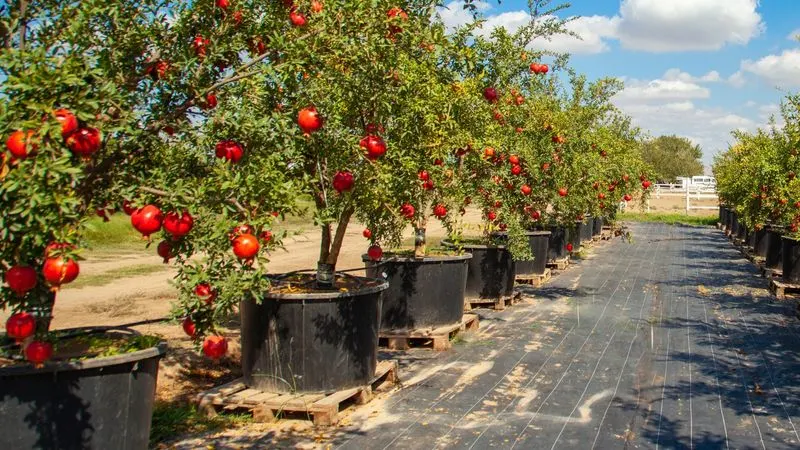
Selecting an appropriate container is crucial for your pomegranate tree’s health. Opt for a pot that measures at least 18 inches in diameter. Adequate drainage is essential, so ensure your container has several holes. This helps prevent waterlogging, which can lead to root rot. Consider using a lightweight material like plastic or fiberglass for easy mobility. Avoid pots that are too small, as they can restrict root growth and limit your tree’s potential. Remember, a well-chosen container supports both stability and growth, setting the stage for a fruitful harvest.
Ensure Proper Drainage
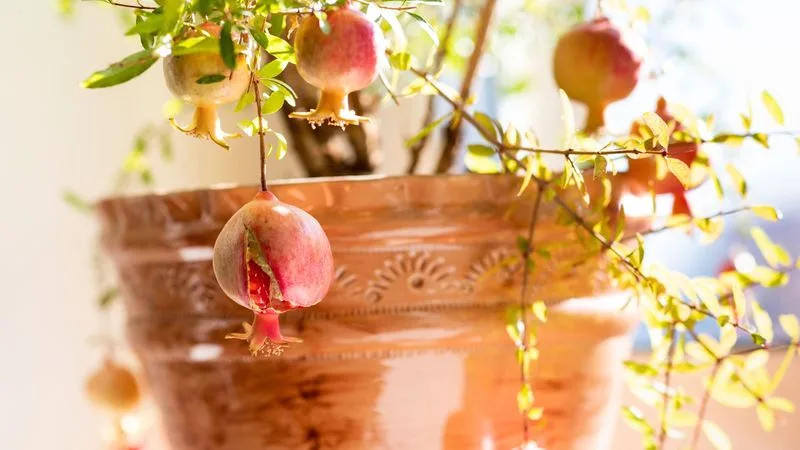
Good drainage is key to preventing root rot in container-grown pomegranates. Make sure your pot has multiple holes at the bottom. Elevate the pot slightly with small stones or pot feet to allow excess water to escape easily. Avoid placing the pot directly on a saucer without any gap. This ensures that water doesn’t stagnate at the base of the pot. Regularly check the drainage system to ensure it’s functioning well, as blocked holes can lead to serious issues. Proper drainage maintains healthy roots and promotes robust growth.
Select the Right Soil
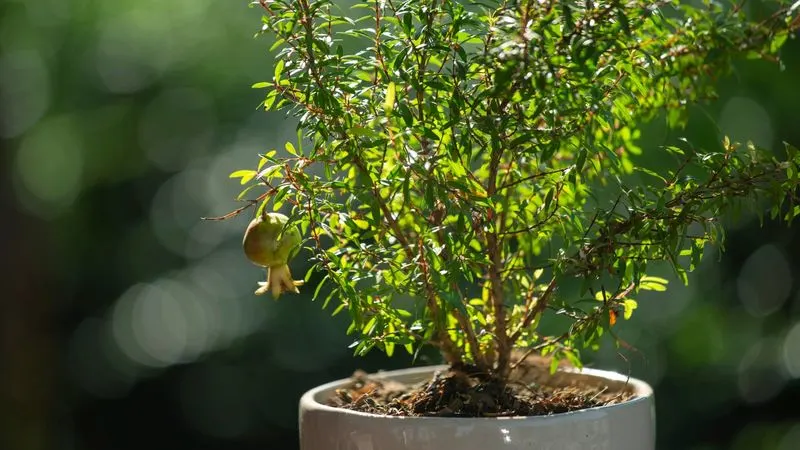
The soil used in your container greatly affects the growth of your pomegranate tree. Choose a potting mix specifically designed for fruit trees. This typically contains a blend of loamy soil, peat, and perlite, which helps retain moisture while ensuring good drainage. Avoid garden soil, as it can compact easily and hinder root growth. Additionally, consider incorporating some organic matter like compost to enrich the soil. The right soil mix supports nutrient uptake and fosters a healthy tree, ensuring a productive growing season.
Position for Maximum Sunlight
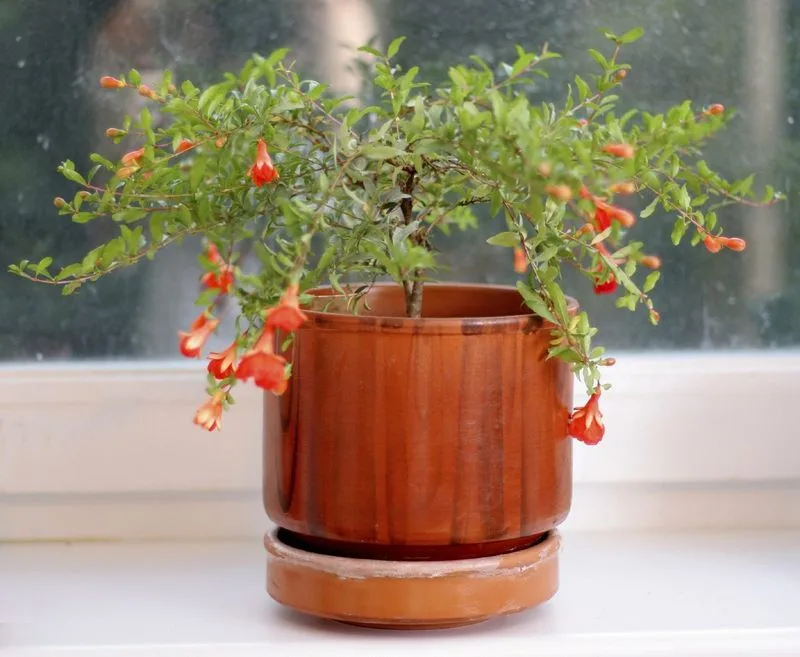
Pomegranates thrive in full sunlight, needing at least 6 to 8 hours of direct light daily. Place your container in a location where the tree can soak up maximum sun, such as a south-facing balcony or terrace. If natural sunlight is limited, consider supplementing with grow lights. Rotate the pot periodically to ensure all sides of the tree receive equal sunlight. This prevents lopsided growth and encourages uniform development. Consistent exposure to sunlight is vital for healthy foliage and fruit production.
Water Consistently
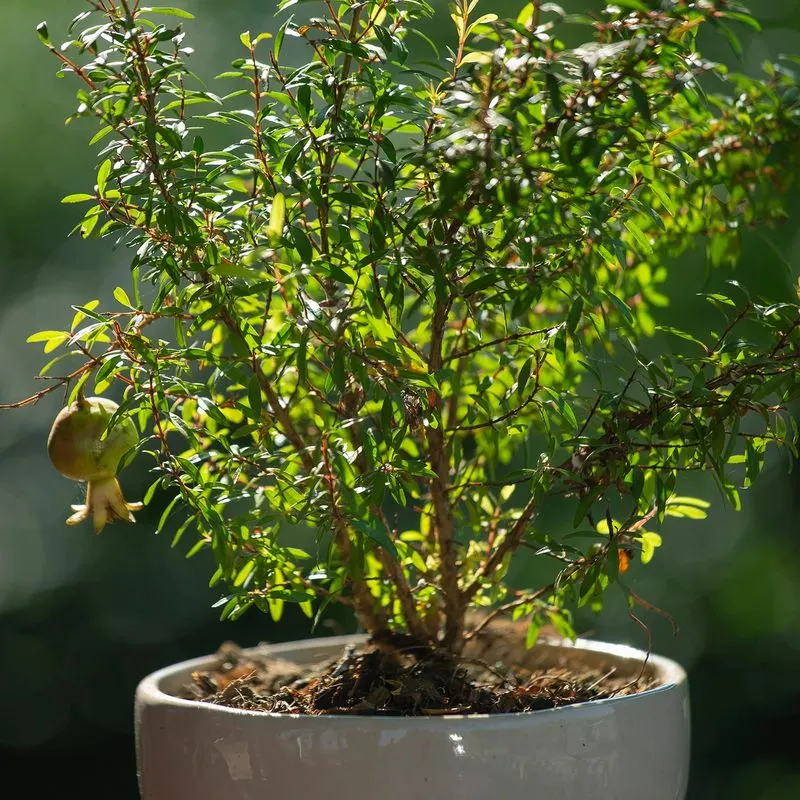
Consistent watering is crucial for the well-being of a container-grown pomegranate tree. Water the tree deeply, ensuring the entire root ball is saturated, and then let the top inch of soil dry out before the next watering. Use a moisture meter if you’re unsure about the soil moisture level. Overwatering can be as detrimental as underwatering, leading to root diseases. Adjust the watering frequency based on the season and weather conditions. A consistent watering routine supports continuous growth and aids in fruit development.
Fertilize Appropriately
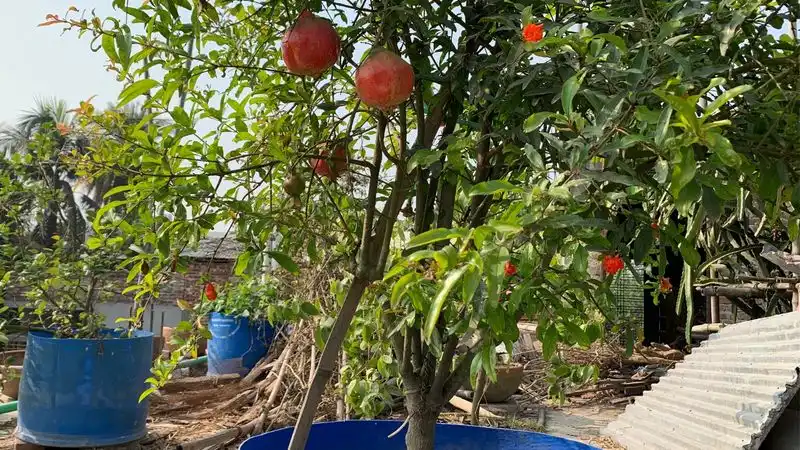
Nutrients are vital for pomegranate trees, especially in containers. Use a balanced, slow-release fertilizer specifically formulated for fruit trees. Fertilize once in early spring and again in mid-summer to boost growth and fruit production. Avoid over-fertilizing as this can cause salt buildup in the soil, detrimental to the roots. Regularly check the tree’s foliage for signs of nutrient deficiencies, such as yellowing leaves, and adjust your fertilizer approach as needed. Proper fertilization is key to a healthy, productive tree.
Prune for Shape and Health

Pruning is essential to maintain a healthy shape and encourage fruiting. Use sharp, clean garden shears to remove dead or crossing branches. Focus on thinning the interior branches to improve airflow and sunlight penetration. This practice reduces disease risk and stimulates growth. Prune annually during the dormant season, typically late winter or early spring. Regular pruning helps manage the tree’s size, ensuring it remains compact and suitable for container growth. A well-pruned tree is both aesthetically pleasing and productive.
Protect from Pests
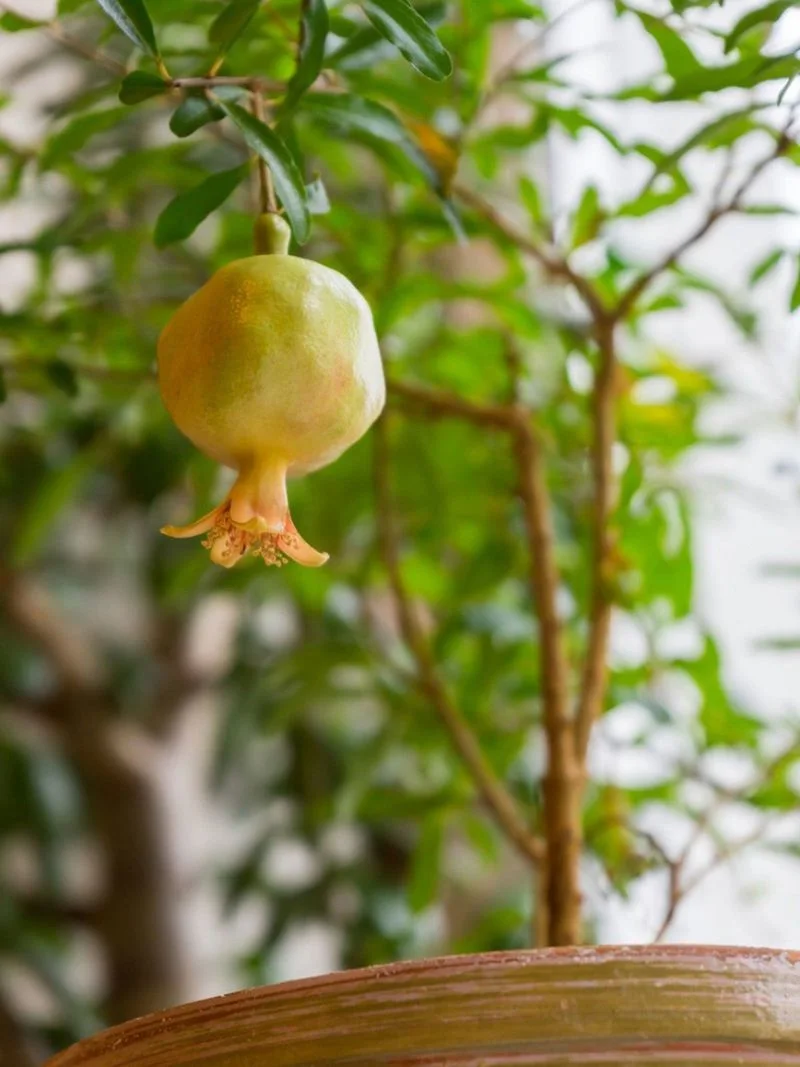
Pest management is crucial for the health of your pomegranate tree. Regularly inspect the leaves and stems for signs of pests like aphids or spider mites. Introduce natural predators, such as ladybugs, to control pest populations. Alternatively, use insecticidal soap or neem oil as organic options. Avoid harsh chemical pesticides as they can harm beneficial insects. Keeping your tree healthy with proper watering and fertilization also minimizes pest issues. Vigilant care and natural solutions help maintain a thriving, pest-free tree.
Monitor for Diseases
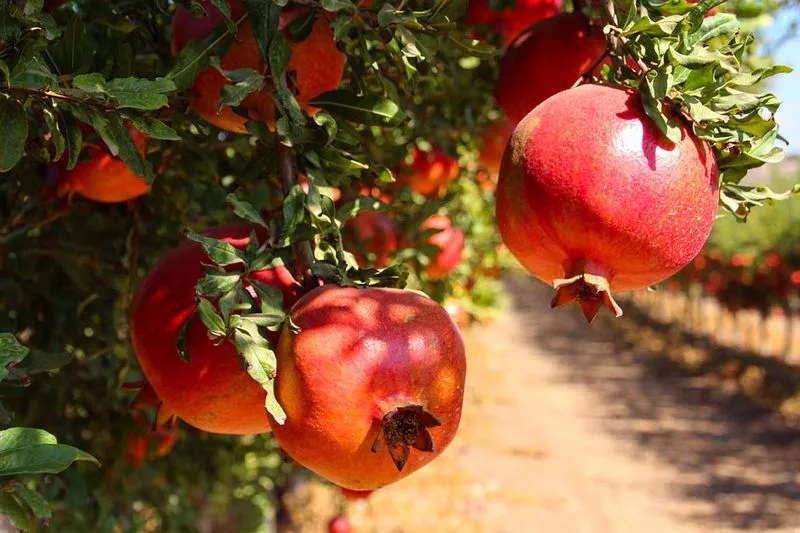
Disease monitoring helps ensure the longevity of your pomegranate tree. Look for common signs such as leaf spots, wilting, or unusual growth patterns. Remove any infected areas promptly and improve air circulation by spacing the branches. Using disease-resistant varieties can also reduce the risk. Maintain a clean growing environment by removing fallen leaves and debris from the pot. If diseases persist, consult with a local extension service for targeted solutions. Proactive monitoring and early intervention keep your tree flourishing.
Repot as Needed
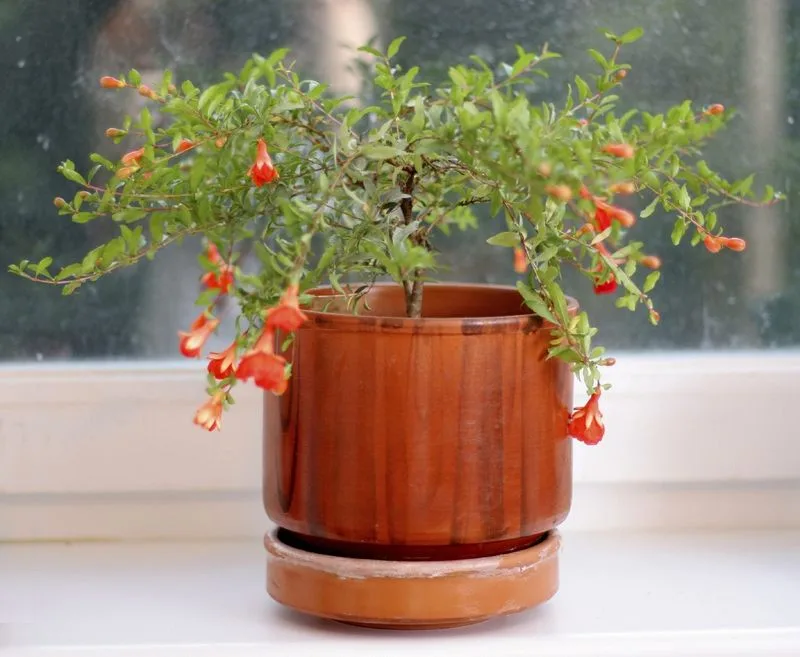
Repotting is necessary for continued growth as the tree matures. Every 2-3 years, check if the roots have outgrown the current pot. Choose a slightly larger container and fresh potting mix. Gently loosen any bound roots before placing the tree into the new pot. This process revitalizes the soil environment and provides additional space for root expansion. Avoid disturbing the roots excessively to prevent stress. Regular repotting ensures that your pomegranate tree has the room to thrive and produce bountiful fruit.
Choose the Right Variety
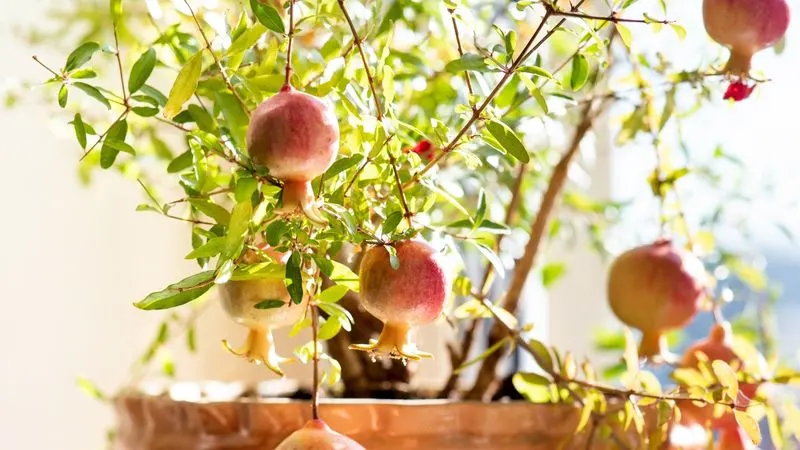
Selecting a suitable pomegranate variety for container growth enhances success. Dwarf varieties like ‘Nana’ are ideal for pots due to their compact size. Consider the climate and local growing conditions when choosing your plant. Some varieties are more cold-hardy than others, which can be crucial if you plan to overwinter outdoors. Visit local nurseries to find varieties that perform well in your area. Having the right variety ensures that your pomegranate tree will adapt well to its environment and yield delicious fruit.
Consider Seasonal Changes
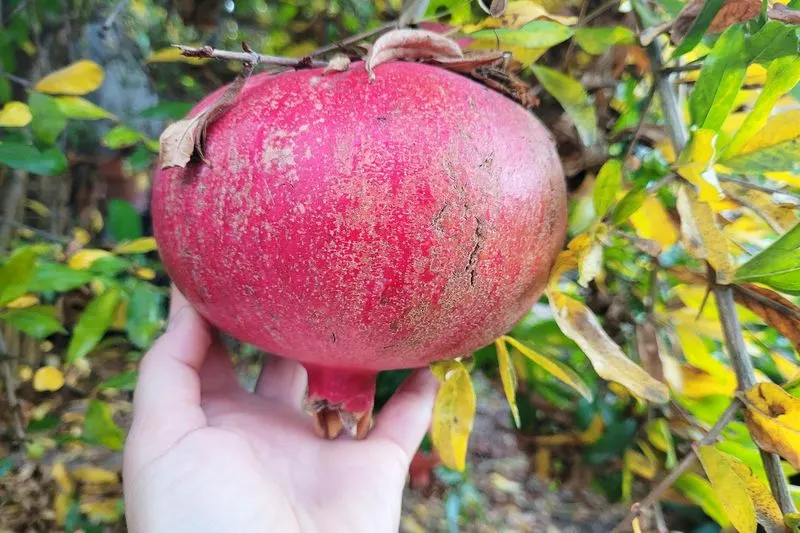
Adapt your care routine based on seasonal shifts to keep your pomegranate tree thriving. In winter, protect the tree from frost by moving it indoors or using frost covers. During the hot summer months, increase watering frequency and shade the pot during peak heat. Each season brings unique challenges, so monitor your tree’s response and adjust care accordingly. By being attuned to seasonal changes, you ensure your pomegranate tree remains healthy throughout the year, regardless of the weather.
Optimize Air Circulation
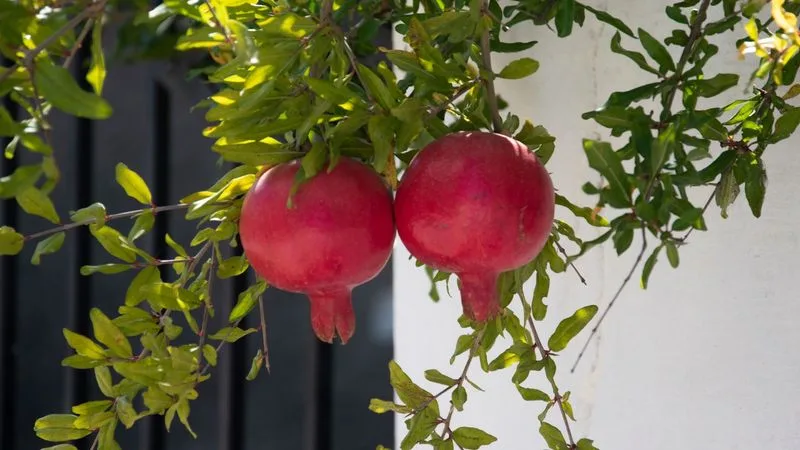
Good air circulation helps prevent diseases and promotes healthy growth. Place your potted tree in an area with good airflow but shielded from strong winds. Ensure that neighboring plants or structures do not block air movement around the tree. Pruning can also help by opening up the canopy for better airflow. Air circulation reduces humidity levels around the foliage, minimizing fungal issues. Keeping the environment breezy yet protected aids in maintaining a robust and resilient pomegranate tree.
Use Mulch Wisely
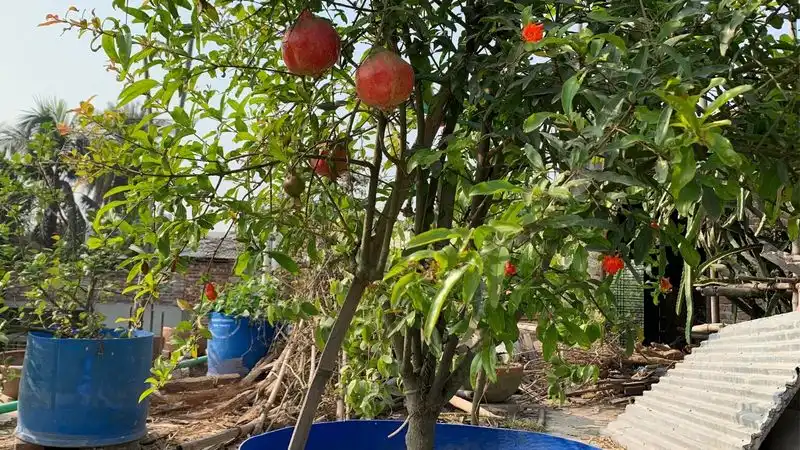
Mulch can be beneficial in retaining moisture and regulating soil temperature. Apply a layer of organic mulch, like bark or straw, on the soil surface. Be cautious not to pile it against the trunk to prevent rot. Mulching helps conserve water, reducing the need for frequent watering. It also suppresses weed growth, which can compete for nutrients. Renew the mulch layer annually to maintain its effectiveness. Thoughtful mulching is a simple yet effective way to boost your pomegranate tree’s health.
Provide Structural Support
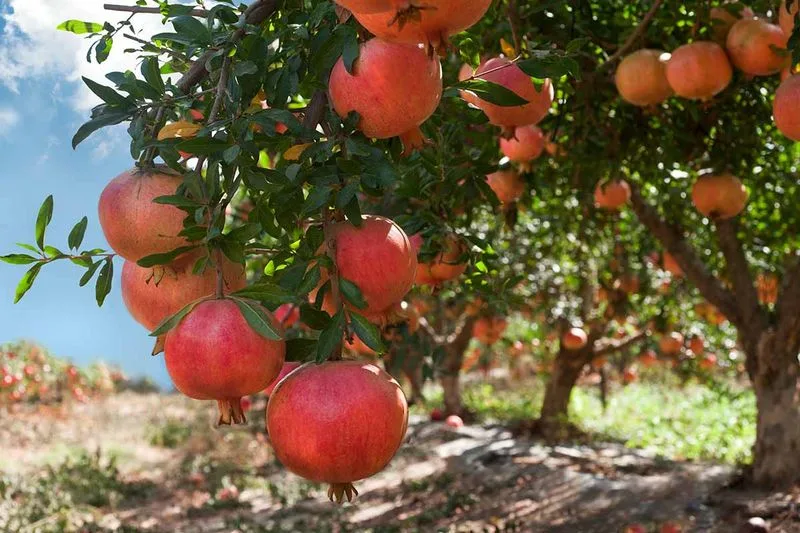
Support structures can prevent branches from breaking under the weight of fruit. Use stakes or a small trellis to provide stability, especially for young trees. As your tree grows, adjust the support to accommodate its changing shape. Be gentle when securing branches to avoid damaging the bark. Structural support is particularly useful during fruiting when branches are most vulnerable. By offering your tree the necessary support, you help it develop a strong framework capable of bearing fruit effectively.
Pollination Assistance
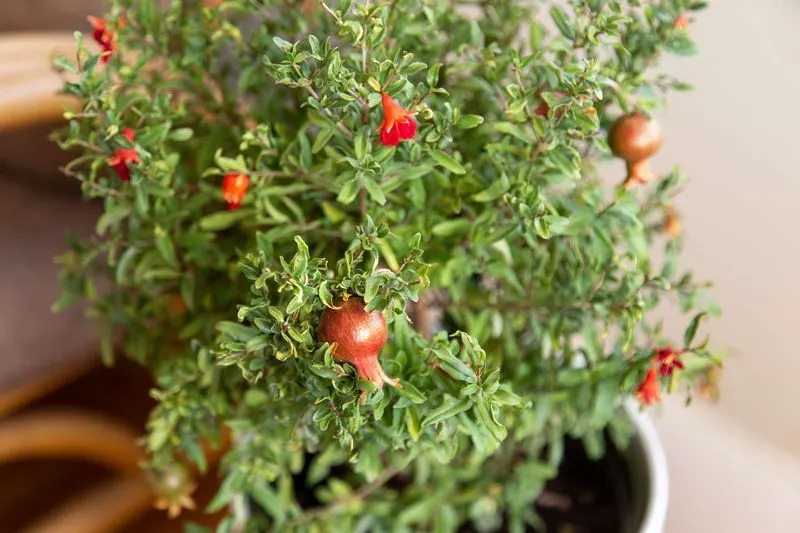
Though pomegranate trees are self-pollinating, manual intervention can enhance fruit set. Gently brush the flowers with a small, clean paintbrush to transfer pollen. This is especially helpful if the tree is indoors or in a low-wind area. Increased pollination results in more uniform fruit development. If planting multiple trees, positioning them close can also improve cross-pollination. Assisting pollination ensures a higher yield and better-quality fruit, making it a worthy endeavor for any pomegranate enthusiast.
Monitor Temperature Extremes
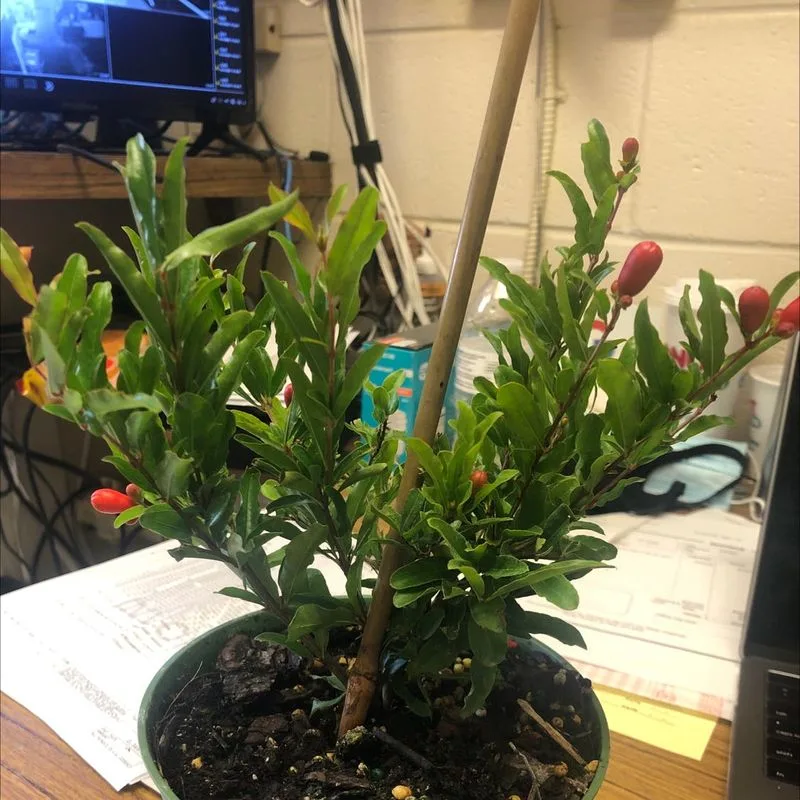
Extreme temperatures can stress your pomegranate tree, affecting its health and productivity. Use a thermometer to monitor conditions, keeping an eye out for frost or heatwaves. In extreme cold, bring the tree indoors or cover it with frost cloth. For excessive heat, provide shade and ample water. Understanding and responding to temperature extremes protect your tree from damage. By maintaining an optimal environment, you promote continued growth and fruiting, ensuring your pomegranate tree’s success.
Enjoy the Fruits of Your Labor
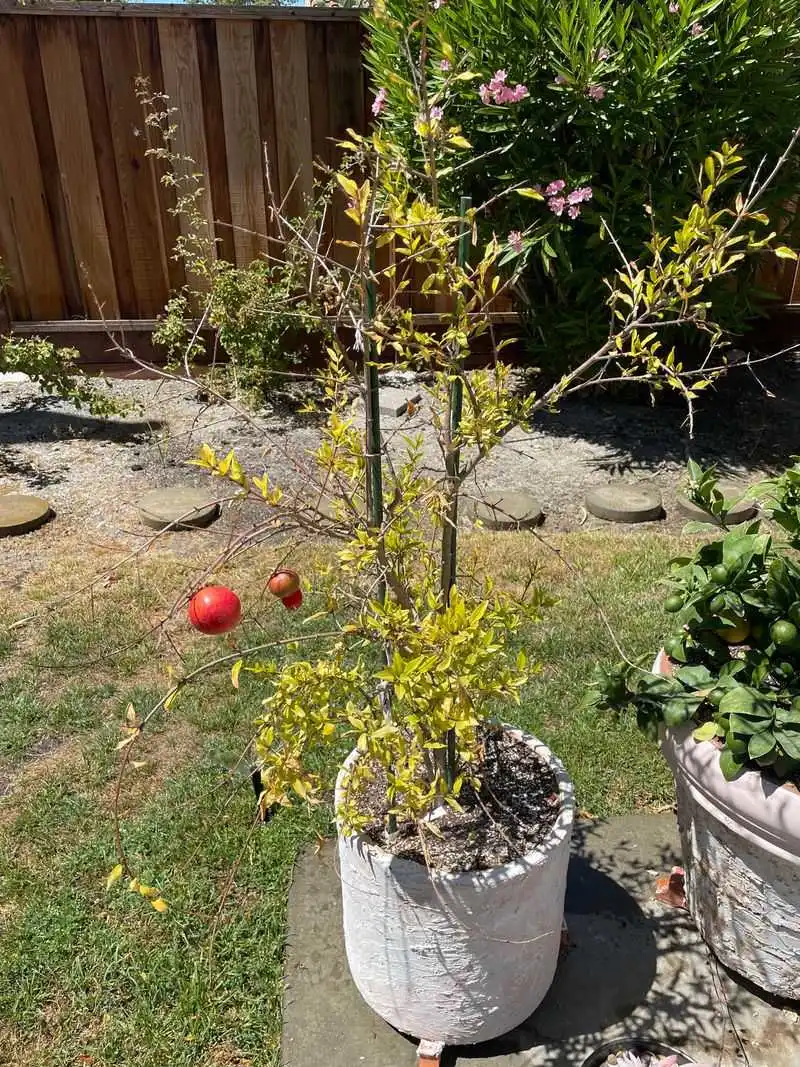
Harvesting your pomegranate tree’s fruit is the rewarding culmination of your efforts. Look for fruits that are deep red and sound hollow when tapped. Use garden shears to cut the fruit, avoiding any damage to the branches. Enjoying your home-grown pomegranates fresh or using them in recipes celebrates your successful gardening journey. Each fruit is a testament to your dedication and care. Relish the sweet taste of success, knowing you’ve nurtured a thriving tree from the confines of a container.

